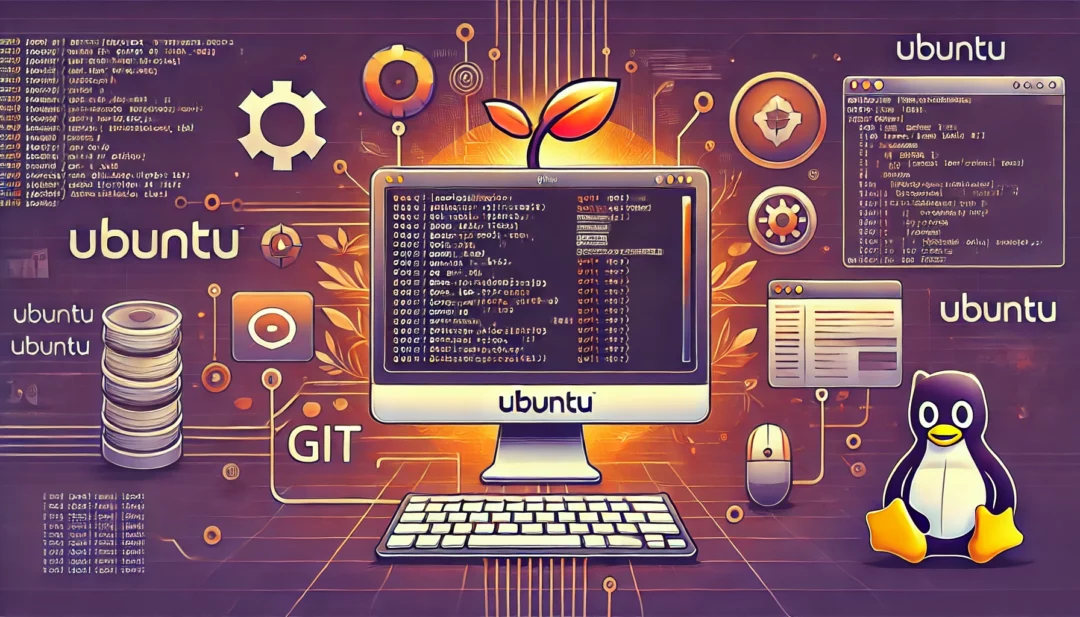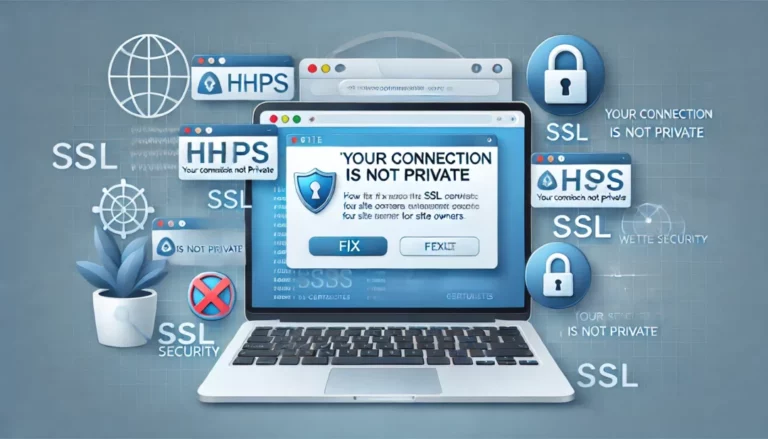
Installing Git on Ubuntu is a straightforward process that gets you ready to manage your code efficiently. Whether you’re a developer collaborating on projects or just starting with version control, Git is an essential tool. By following a few simple steps, you can have it up and running in no time.
You’ll begin by updating your system to ensure everything’s current. Next, you’ll install Git using Ubuntu’s package manager. Finally, you’ll verify the installation and configure Git with your user details. With these steps, you’ll be set to start tracking changes and collaborating seamlessly.
Overview Of Git And Ubuntu
Git is an open-source distributed version control system designed to handle everything from small to large projects with speed and efficiency. It’s essential for tracking changes in source code during software development and facilitating collaboration between developers. Using Git, you can record project history, revert to previous states, and branch code for experimentation while merging changes seamlessly.
Ubuntu, a widely-used Linux operating system, provides a developer-friendly environment for managing repositories, running command-line tools, and building software. Its stability, security, and extensive community support make it a preferred choice for Git users.
Combining Git with Ubuntu creates an efficient setup for version control and software development. Whether you’re managing private repositories, contributing to open-source projects, or automating workflows, this pairing ensures ease of use and high productivity.
Prerequisites For Installing Git
Ensure you meet the necessary prerequisites before starting the Git installation process on Ubuntu. Proper preparation prevents installation errors and simplifies the setup.
Updating The System
Update your system to ensure compatibility with the latest Git version. Use the command below to refresh the package lists and get available updates:
sudo apt update && sudo apt upgrade -y
This command performs two tasks: sudo apt update downloads package information, and sudo apt upgrade -y installs available updates. Run reboot if a major system update is applied. A fully updated system minimizes conflicts during Git installation.
Verifying Tool Availability
Ensure apt and add-apt-repository are functional. These tools manage installation and repositories. Check their presence by running:
which apt
which add-apt-repository
If either command returns an empty result, install apt using sudo apt install apt and software-properties-common for repository management:
sudo apt install software-properties-common
This ensures your system has the necessary tools to seamlessly install Git and its dependencies.
Steps To Install Git On Ubuntu
Installing Git on Ubuntu helps you efficiently track code changes and collaborate on software projects. Follow these steps to install Git using different methods.
Installing Git Using APT
- Update Package Index:
Run the following command to ensure you have the latest package list:
sudo apt update
- Install Git Package:
Install the Git software package from the official Ubuntu repository:
sudo apt install git
- Verify Installation:
Confirm the installed Git version with this command:
git --version
The output should display the installed version, such as git version 2.x.x.
- Set User Information:
Configure your Git username and email globally using these commands:
git config --global user.name "Your Name"
git config --global user.email "[email protected]"
These settings help identify you during version control operations.
- Install Required Dependencies:
Ensure all necessary tools for building Git are installed:
sudo apt update
sudo apt install make gcc libssl-dev libcurl4-openssl-dev libexpat1-dev gettext unzip
- Download Latest Git Source:
Visit the Git project’s download page to get the latest version or use the following commands to acquire it directly from GitHub:
wget https://github.com/git/git/archive/refs/tags/v[VERSION].tar.gz -O git.tar.gz
tar -xvzf git.tar.gz
cd git-[VERSION]/
- Compile Source Code:
Build and install Git by running:
make prefix=/usr/local all
sudo make prefix=/usr/local install
- Verify Compilation:
Check the installed version to confirm successful compilation:
git --version
- Clean Up:
Delete unused installation files to save space:
cd ..
rm -rf git-[VERSION] git.tar.gz
Building Git from source gives you access to the latest features, even for versions not included in your package manager.
Verifying The Git Installation
After installing Git on Ubuntu, you need confirmation that the installation succeeded and Git is ready for use. This section explains how to check the installed version and configure essential Git settings for version control.
Checking The Version
Verify the installed Git version to confirm the installation. Use the following command in your terminal:
git --version
This displays the currently installed Git version. For example, you may see output like git version 2.34.1. If the command returns an error or no version information, recheck the installation steps.
Configuring Git Settings
Set a Git username and email for identification in version control. Run the following commands:
git config --global user.name "Your Name"
git config --global user.email "[email protected]"
These details are visible in commit metadata to identify contributors. Verify the settings by running:
git config --global --list
This command displays all global configurations, ensuring accurate setup. Adjust settings if discrepancies emerge.
Common Installation Issues And Fixes
Dependency Errors
Dependency-related errors often occur during Git installation on Ubuntu. Missing essential tools or libraries might cause this. Use the sudo apt update command to ensure the package list is refreshed. Install dependencies with sudo apt install build-essential libssl-dev libcurl4-gnutls-dev libexpat1-dev gettext unzip. This ensures that all required components are available.
Incorrect Git Version
Installing an outdated Git version happens if the system package manager isn’t up-to-date. Refresh the package index with sudo apt update before installing Git. If the installed version remains old, consider adding a Personal Package Archive (PPA) for the latest updates. Use the following commands:
sudo add-apt-repository ppa:git-core/ppa
sudo apt update
sudo apt install git
Permission Denied Errors
Permission errors often relate to using the wrong user account or insufficient privileges. Use sudo before commands requiring administrative rights. For instance, run sudo apt install git to avoid issues if permission is blocked.
Broken Repository Links
Broken or misconfigured repositories can prevent successful installation. Check the /etc/apt/sources.list file for incorrect entries. Use sudo nano /etc/apt/sources.list to open the file, remove erroneous links, and then save changes. Afterward, update the package source using sudo apt update.
Compile Errors When Building From Source
Errors might arise during building Git from source if all dependencies are not installed. Verify you’ve installed required tools like GCC and Make using sudo apt install build-essential. Ensure you’re in the correct directory after downloading and extracting the Git source file. Execute commands in sequence to avoid errors:
make prefix=/usr/local all
sudo make prefix=/usr/local install
Configuration Not Saving
If Git doesn’t save configuration details, verify if they were set globally. Use the following commands:
- To set a username:
git config --global user.name "Your Name" - To set an email:
git config --global user.email "[email protected]"
Check settings using: git config --global --list.
Network Connectivity Issues
Network problems might block package downloads. Ensure your connection is stable. Use ping google.com to verify connectivity. If issues persist, check proxy settings in the terminal with echo $http_proxy and correct them if necessary.
Package Lock Error
Apt errors like “Could not get lock” occur when another process uses the package manager. Wait for the ongoing process to finish, or terminate it with sudo killall apt apt-get if necessary. Avoid using multiple package management tools simultaneously.
This section addresses the most common issues you might face when installing Git on Ubuntu while offering actionable fixes to streamline the process.
Conclusion
Installing Git on Ubuntu equips you with a powerful tool for managing your projects and collaborating effectively. By following the outlined steps, you can ensure a smooth setup and take full advantage of Git’s capabilities. Whether you’re contributing to open-source projects or managing private repositories, this combination provides a reliable and efficient environment for development. With proper configuration and troubleshooting, you’re ready to streamline your workflows and enhance productivity.
Frequently Asked Questions
What is Git, and why is it important?
Git is an open-source distributed version control system that helps track changes in source code and facilitates collaboration among developers. It is essential for managing code repositories, contributing to open-source projects, automating workflows, and ensuring efficient version control.
Why choose Ubuntu for Git installation?
Ubuntu is a developer-friendly Linux operating system that provides a stable and widely-supported environment for software development. It offers compatibility with Git and makes managing repositories and building software seamless.
How do I install Git using the APT package manager on Ubuntu?
To install Git using APT, update your system by running sudo apt update and follow it with sudo apt install git. Once installed, verify the version using git --version.
How do I configure Git after installation?
To configure Git, set your username with git config --global user.name "Your Name" and your email with git config --global user.email "[email protected]". Verify settings with git config --global --list.
Can I install Git from source on Ubuntu?
Yes, you can install Git from source by downloading the latest Git source code, compiling it, and installing the binary. This method provides access to the latest Git features not available in standard package managers.
How do I verify if Git is installed correctly?
Run the command git --version to check the installed Git version. If it displays the version number, Git is installed correctly.
What are common issues during Git installation and how to fix them?
Common issues include dependency errors, network problems, or permission denied errors. Fix these by installing required dependencies, checking internet connectivity, and using sudo for elevated permissions.
Do I need to update my system before installing Git?
Yes, updating your system ensures compatibility with the latest Git version. Run sudo apt update followed by sudo apt upgrade to install all available updates.
What if I face dependency errors during Git installation?
Install missing dependencies using the command sudo apt install <package-name> or use sudo apt --fix-broken install to resolve dependency issues.
Can I use Git for private repositories?
Yes, Git supports private repositories, providing a secure way to manage your code and collaborate with authorized users effectively.
Is building Git from source better than using APT?
Building Git from source allows access to the latest features and updates not immediately available in package managers. However, it’s more complex and requires installing dependencies and compiling code.
How do I clean up after building Git from source?
After installation, remove unused files by running make clean and/or deleting the downloaded source files to free storage space.
Can Git be used without configuration?
While Git can function without specific configuration, setting a username and email is essential for proper identification in version control and collaboration workflows. Ensure these are set after installation.
How do I find broken repository links during Git installation?
Check for broken repository links in /etc/apt/sources.list. Update or comment out invalid links, then run sudo apt update to refresh the package list.
Why does Git require username and email configuration?
Git uses your username and email to identify who made changes in a repository, ensuring clarity in version control and collaboration records.



